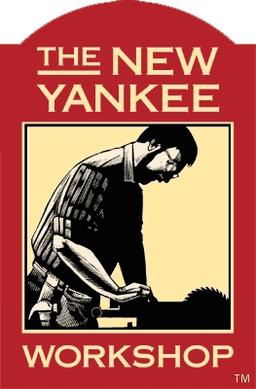- 4 Posts
- 36 Comments

 54·8 months ago
54·8 months agomexicanrussian joker

 10·8 months ago
10·8 months agoFrom my small experience with Qualcomm in the past, I’m not too hopeful. In a company I used to work for, we wanted to use one of their SoC with Linux, which they claimed they supported. It was many years ago. But was full of closed binary blobs which even when signing NDAs, we couldn’t get the source for. We’re talking user-space drivers, sensors offloaded to a separate core with closed source firmware etc. It’s Linux, but it’s not Linux in spirit, it feels so closed and proprietary and secretive. They’re coming from Android, which google architecturally enabled vendors to close their drivers by utilizing HAL. It’s the single most significant blow to Linux by any corporation so far. It enabled thousands of vendors to close their shitty driver in user-space and not maintain it for newer kernels (kernel driver is just an IO proxy for user-space drivers). I get that without it, there wouldn’t be Android phones we have today, but I expected them to slowly open up. 10+ years later, almost nothing changed, in fact - things seem worse to me.
This looks the most promising. I’ll take a closer look. Does it provide a rtsp stream?

 2·9 months ago
2·9 months agoAny PC that has virtualization features can be used. Unless it’s very old, I’d say it’s supported. But it may not be enabled in the bios by default. It’s called VT-x for Intel and AMD-v for AMD, I think. But both are supported for at least 10 years on almost any PC.

 6·9 months ago
6·9 months agoIt’s a hypervisor level virtual machine host and you can use it to install multiple os’s on the same machine with little overhead. I’ve been running haos like that for a few months now and I’m super satisfied.

 1·10 months ago
1·10 months agoCompatibility is iffy on some of the newer ones. Here’s a list of what works for some of them: https://github.com/Dunedan/mbp-2016-linux

 241·11 months ago
241·11 months agoBecause you can’t end to end encrypt if you don’t have control over both ends. You’d need to trust the other end. Signal doesn’t and their user base especially doesn’t.
There is indeed multiple ways of doing anything in freecad. But over time, I prefer staying in Part design as much as possible as this makes it more modifiable and customizable and there are plenty of reasons more for me. But in the end - whatever works is good enough.
Shape binder is what you need. Shape binder can be used to reference geometry from another body. What I would do is I’d make one pocket on the main body. Then select another body and make it an active body. Then select the pocket you made (the surface or the edge) and create a shape binder (part design). This will effectively import the selected feature from the first body and you can reference it from second body. Make sure you hide the first body, as it somehow gets in the way of shape binder, for some reason. Repeat for third body.

 7·1 year ago
7·1 year agoYes, flaxseed oil for salads is great. It just takes forever to polymerize. We’re talking weeks, maybe up to a month. But you can still use the cutlery, it will just wear off fast. You can speed it up by boiling it before use, but have to be careful to not burn it or have it go ablaze. I just use it raw and apply it from time to time, eventually it all just blends and I reapply once a year.

 2·1 year ago
2·1 year agoLooks like you’re just missing Linux to compete the list. It’s not for everyone yet, though.
Well, it’s not 2024 just yet. And besides that, I don’t think it’s possible to completely control everything that gets imported, but I reckon it’s going to be a rather rare occurrence in the future.

 12·1 year ago
12·1 year agoIt’s often about the money, yes. But highly sought after engineers who can choose where they want to work probably have other criteria too, like not getting stuck in MS corporate ladder long term. That being said, money compensates for a lot of things, that’s just the world we live in.
Yes, for one device, I’d do wifi too. ZigBee does add complexity, but it also adds many possibilities. Esphome is a good solution, I use it also. In fact it seemlessly integrates with HA, so it doesn’t matter
One of the bigger reasons is ZigBee is capable of mesh network forming, which is useful if you want more devices to be smart. It’s also low power. And the devices are in their private network isolated from the internet, which is also a desirable quality. In summary, ZigBee is built for smart devices, whereas wifi not so much.
This is great! I’ve only recently discovered jq and was thrilled to have it after bashing my head in bash for a couple of days. I replaced the whole operation with a single line. This tutorial is just what I need. I like that it’s interactive and has neatly grouped examples! Bookmarking it, as I’ll need it very soon again.
If it works for you, don’t touch it, great. Manjaro mostly just works, but occasional headaches I kept getting, like packages being broken for days at a time, no easy place to look for solution (their repo being different to arch’s makes 99%of the difficulty) made me switch to arch/endeavorOs. Eventually, they may get stable enough to be acceptable, but I don’t think their way is the right way to do it and they may even harm or slow down arch development and community in the process. Just looks like arch with extra steps, so I always recommend endeavorOs, Garuda or plain Arch, before Manjaro. But that doesn’t mean Manjaro is trash and in some cases, it may even be the best solution.

 2·1 year ago
2·1 year agoI agree, and pairs nicely with their ioniq 5 design language, which is also beautiful to be. And I also agree that many folks will disagree. I found kia ev6 to be uglier than ioniq 5, but I found out I’m in the minority. And ioniq 6 isn’t ugly to me, but I don’t find it too pretty either. Tastes are different, I guess.
Hard to tell From the photo, but might be Ash. If so, it would make a great axe handle. But you can of course make an axe handle out of any hardwood, it will mostly be fine.





So, not the droid we Are looking for… :(